
Species portraits
Classification of sea turtles in the animal kingdom
Vertebrates (Vertebrata)
Four-limbed vertebrates (Tetrapoda)
Amniotes (Amniota)
„Reptiles“ („Reptilia“)
Turtles (Testudines)
Hidden-necked turtles (Cryptodira)
Chelonioidea (Sea turtles in the wider sense)
Dermochelyidae (leatherback or leathery turtles; 1 species)
Leatherback turtle
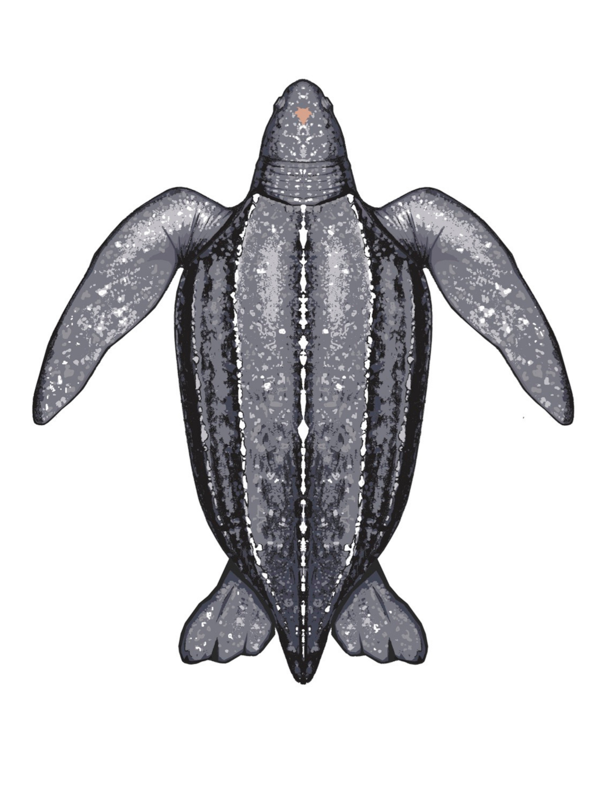
Scientific Name: Dermochelys coriacea
Other names (examples): Penyu belimbing (Indonesian), Tartaruga-de-couro (Portuguese), Lederschildkröte (German)
Distribution: All oceans except Arctic and Antarctic waters; northernmost regular occurrence of sea turtles
Size (length of carapace): 132–178 cm, max. 200 cm
Weight: 250–907 kg
Food: As adults, mainly jellyfish (food specialist)
Special characteristics: Largest recent sea turtle; some ability to regulate body heat significantly above water temperature; dives to depths of up to 1,200 m in search of food
Status of endangerment (IUCN Red List): vulnerable; some populations endangered or data deficient
In projects of Turtle Foundation: Sipora and Selaut Besar, West Sumatra, Indonesia
Cheloniidae (sea turtles in the strict sense, hard-shelled sea turtles; 6 species)
Loggerhead sea turtle
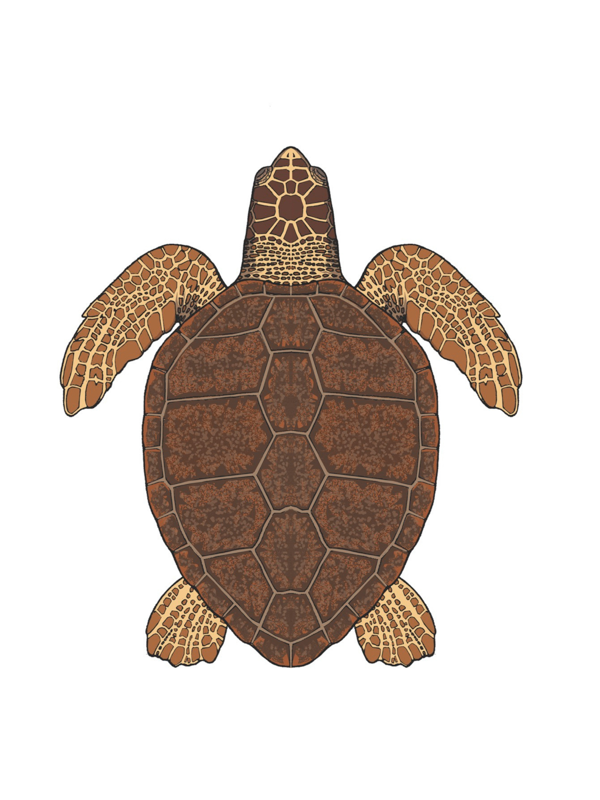
Scientific Name: Caretta caretta
Other names (examples): Penyu tempayan (Indonesian)
Distribution: Circumglobally the tropical and subtropical parts of the Pacific, Indian and Atlantic Oceans and Mediterranean Sea
Size (length of carapace): 85–124 cm
Weight: 80–200 kg
Food: Crustaceans, mussels, snails, squids, fishes
Special characteristics: Very big head with strong jaws for cracking hard shells
Status of endangerment (IUCN Red List): vulnerable
In projects of Turtle Foundation: Boa Vista (Cabo Verde); Sipora and Selaut Besar, West-Sumatra, Indonesien
Kemp’s ridley sea turtle
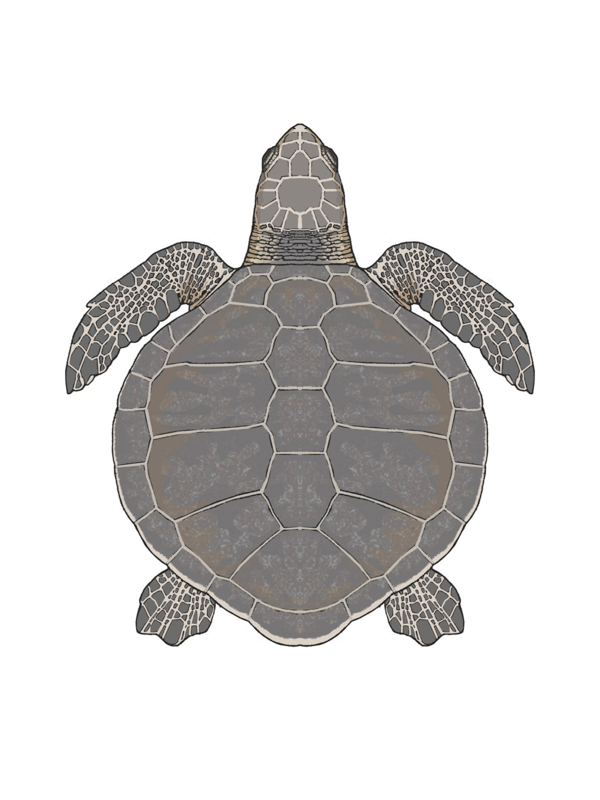
Scientific Name: Lepidochelys kempii
Other names (examples): Atlantic ridley sea turtle (english)
Distribution: Gulf of Mexico, going north up to Massachusetts
Size (length of carapace): 61–76 cm
Weight: 36–45 kg
Food: Crustaceans, mussels, snails
Special characteristics: Rarest and most endangered sea turtle; used to nest in arribadas (synchronized mass arrival of thousands at nesting beach).
Status of endangerment (IUCN Red List): critically endangered
In projects of Turtle Foundation: No
Olive ridley sea turtle
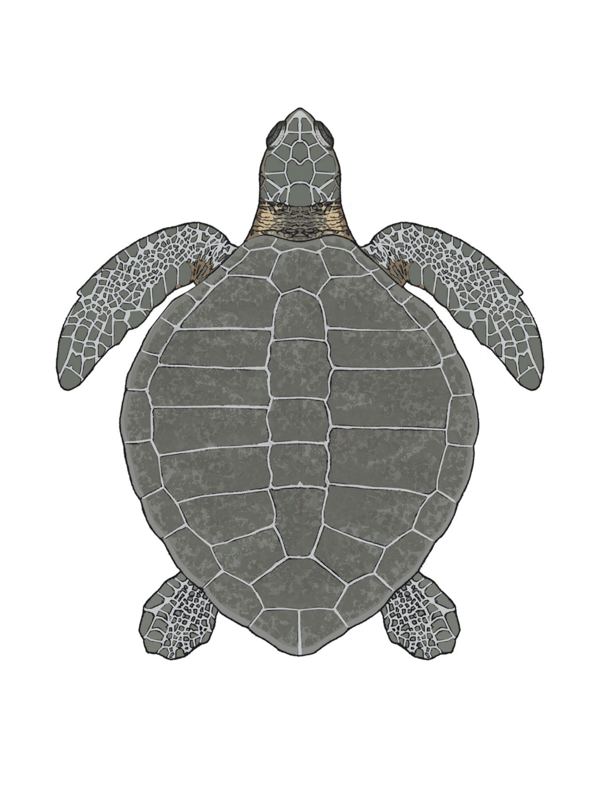
Scientific Name: Lepidochelys olivacea
Other names (examples): Penyu lekang (Indonesian)
Distribution: Circumglobally tropical parts of Pacific, Indian & Atlantic Oceans
Size (length of carapace): 55–76 cm
Weight: 36–43 kg
Food: Crustaceans, jellyfish, mussels, snails, algae
Special characteristics: Most common sea turtle; nests in Central America and India, it nests in so-called arribadas (synchronized mass arrival of thousands of animals at nesting beach)
Status of endangerment (IUCN Red List): vulnerable
In projects of Turtle Foundation: Occasionally in Sipora and Selaut Besar, West Sumatra, Indonesia
Hawksbill sea turtle
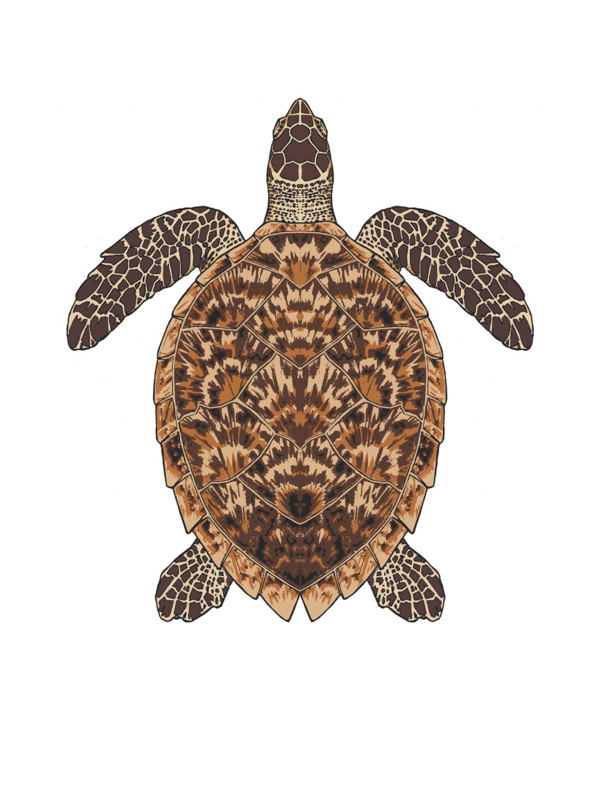
Scientific Name: Eretmochelys imbricata
Other names (examples): Penyu sisik (Indonesian)
Distribution: Tropical parts of the Pacific, Indian and Atlantic Oceans
Size (length of carapace): 75–88 cm
Weight: 43–75 kg
Food: Sponges, corals, mussels, crustaceans
Special characteristics: Source of coveted turtle shell; specializes in grazing sponges in coral reefs
Status of endangerment (IUCN Red List): critically endangered
In projects of Turtle Foundation: Anti-turtle shell campaign, nationwide in Indonesia; Berau, East Borneo, Indonesia
Flatback sea turtle
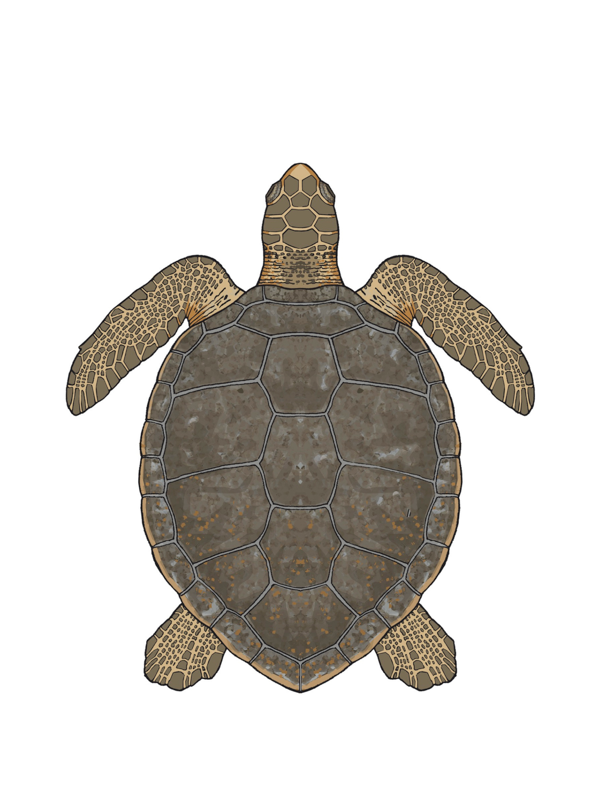
Scientific Name: Natator depressus
Other names (examples): Penyu pipih (Indonesian)
Distribution: Tropical waters of the Australian-New Guinea continental shelf
Size (length of carapace): 75–99 cm
Weight: 70–90 kg
Food: Jellyfish, anemones, sea pens
Special characteristics: Nests exclusively in northern Australia
Status of endangerment (IUCN Red List): data deficient, but likely threaded and therefore strictly protected in Australia
In projects of Turtle Foundation: No
Green sea turtle
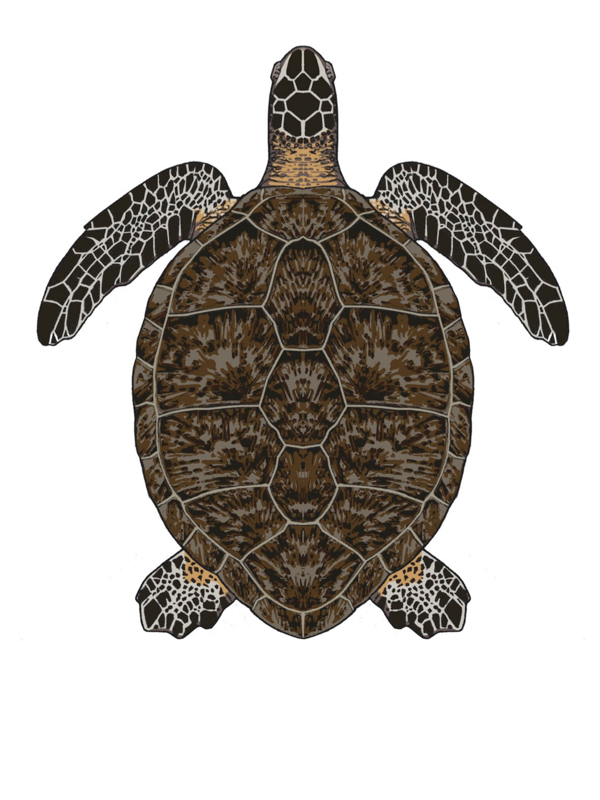
Scientific Name: Chelonia mydas
Other names (examples): Penyu hijau (Indonesian); honu (hawaiian); Grüne Meeresschildkröte (German)
Distribution: Tropical and subtropical parts of the Pacific, Indian & Atlantic Oceans, Mediterranean Sea
Size (length of carapace): 80–122 cm
Weight: 65–204 kg
Food: Seegrass, algae
Special characteristics: Second-largest sea turtle and largest hard-shelled sea turtle; only sea turtle that is almost purely vegetarian as an adult
Status of endangerment (IUCN Red List): endangered
In projects of Turtle Foundation: Berau, East Borneo, Indonesia; Sipora (occasionally) and Selaut Besar, West Sumatra, Indonesia

